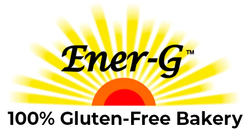When moving to gluten-free living you are given a great deal of new information to work through. There are multiple types of food that are suddenly off limits. Some believe that if they eliminate bread, that will be sufficient. Others will think that wheat is the only thing that needs to be eliminated. The question that needs answered is, “Are gluten-free and wheat-free the same thing?”
Are gluten-free and wheat-free the same thing?

What is a wheat-free diet?
There are some who are diagnosed with an allergy to wheat only. In this instance, they have the ability to eat certain contain foods but not be as limited as those with a gluten sensitivity. There are food items that someone with a wheat allergy can enjoy that those with a gluten-free diet cannot. However, a gluten-free diet can still be a welcome change for those with a wheat-allergy as it is sure to prevent them from exposure to any wheat related foods.
Common foods someone with a wheat allergy should be cautious of:
- Bread - there are wheat-free breads available, but remember to look for wheat-free breading and breadcrumbs, too.
- Stuffing - Stuffing, especially around holiday time, can be challenging for those with wheat allergies. Be sure to look for a brand that has wheat-free stuffing.
- Crackers - Many crackers are made from wheat products. It is important to look at the ingredients in crackers before eating them as there are some delicious wheat-free crackers out there.
- Flour - Many varieties of flour will contain wheat. If you are trying to avoid wheat, you will definitely want to look at the types of flour in the foods you consume as well as the alternative types of flour you choose to bake with.
- Pasta - When giving up wheat, pasta is an item that has to go fairly quickly. Many pastas will use wheat in making them. It is important to look at ingredients when considering vegetable pastas as these may still include wheat.
- Soy Sauce - Soy sauce is made from some wheat products. Instead of using soy sauce, try using liquid aminos as an alternative.
Pro Tip - When going wheat-free it is important to watch for cross-contamination. Make sure to research brands and products before purchasing. Some items can be produced in a factory that also makes wheat products, and this can mean that an item that is known to be wheat-free can actually have traces of wheat in it. Be sure to find a brand whose facilities are dedicated wheat-free.

What is a gluten-free diet?
While a wheat-free diet eliminates only wheat, a gluten-free diet requires more items to be removed from a person’s diet. Gluten is a substance present in many foods including wheat that is responsible for the elastic texture of the dough used to make these items. For some individuals, this gluten can cause health issues or an allergic reaction. This will require a modification to many of the foods that someone might have eaten. Here are a few of the things to be aware of when moving to gluten-free eating.
Common foods someone with a gluten allergy should be cautious of:
- Bread - Most breads are made with flours and ingredients that contain gluten. It is important to find a gluten-free bread option if you hope to continue eating bread while living a gluten-free lifestyle.
- Cake - Most cakes and desserts are made with flours that contain gluten. There are gluten-free cakes and desserts or some gluten-free flours for you to bake your own.
- Cereal - There are quite a few cereals on the market that contain gluten. However, there are cereals out there that are gluten-free and can work for a delicious breakfast.
- Crackers - Crackers are another area where gluten can be found. Many crackers are made with flour containing gluten. If you are a fan of crackers, look for gluten-free crackers that use alternative flours.
- French Fries - While many will think french fries are simply potatoes and should be safe, most varieties are not gluten-free friendly. When purchasing french fries make sure to check on the brand for gluten or gluten cross-contamination.
- Oatmeal - Oatmeal is a common source of gluten. This can be because of the way that oatmeal is processed. Not all oatmeal will contain gluten. However, the risk of cross contamination is higher with oatmeal than with some other products.
- Pizza - Pizza crusts are another area where gluten can be a problem. It is important to research a gluten-free pizza crust. If you are ordering pizza in a restaurant, confirm that there will be no cross-contamination as it is prepared.
- Processed meats - Items like hot dogs and lunch meat can have gluten in them because of the way they are processed. When choosing these items, be sure to look at ingredients and consider non-processed alternatives.
- Sauces - Many sauces contain gluten. Items like gravy, soy sauce, and salad dressings can have gluten containing ingredients that are used as thickeners or used in some part of the sauce preparation process.
- Soups - Soups and broths can also be a hidden location of gluten. It is important to look at ingredients as well as checking for how the soup is made.
Pro Tip - When going gluten-free it is important to watch for cross-contamination. Make sure to research brands and products before purchasing. It is also important to ask in any restaurants about cross contamination or items that might have gluten. When dining out, asking for the chef to confirm is always a wise move.

